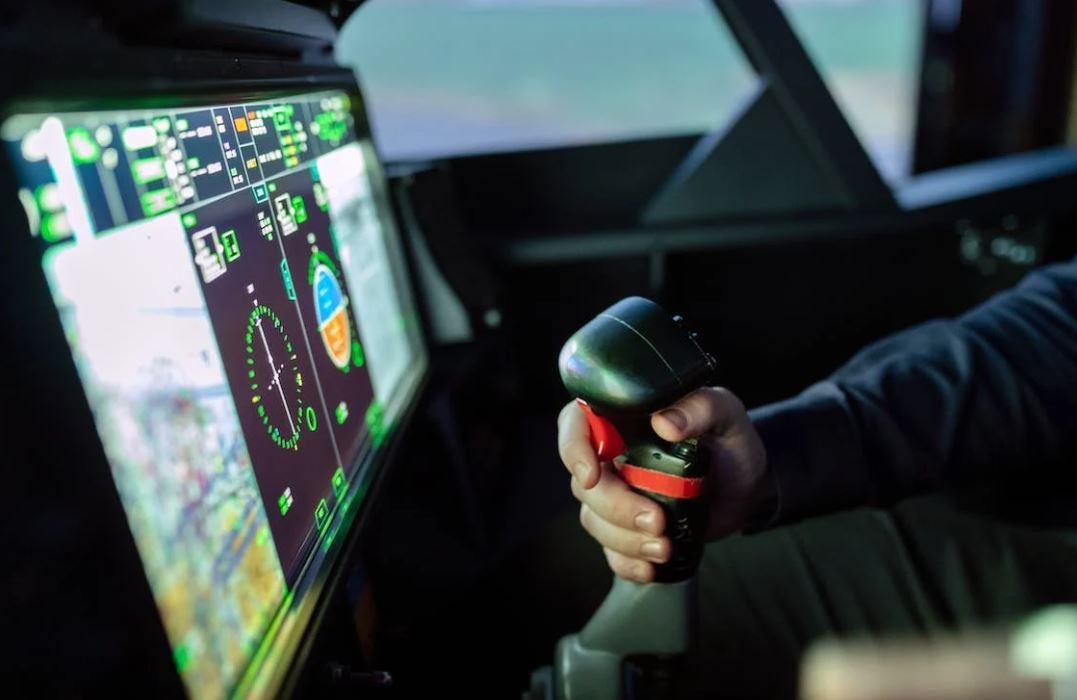Tesla and Uber
Electric vehicle manufacturer Tesla and ride-sharing company Uber have revolutionized the automotive and transportation industries, respectively. Both companies have disrupted traditional models and introduced innovative approaches that are transforming the way people think about transportation. In this article, we will explore the key aspects of Tesla and Uber’s success and the influence they have on their respective industries.
Key Takeaways
- Tesla has redefined the electric vehicle market and has become a leader in sustainable transportation.
- Uber has disrupted the traditional taxi industry and created a new model for ridesharing services.
- Tesla and Uber are driving the adoption of autonomous vehicles, with plans to deploy self-driving cars in the near future.
Tesla, founded by Elon Musk in 2003, has become synonymous with electric vehicles. With sleek designs and impressive performance, Tesla’s cars have popularized the idea that electric vehicles can be both environmentally friendly and desirable. The company’s flagship model, the Tesla Model S, has received widespread acclaim and is often hailed as one of the best electric cars on the market.
Uber, on the other hand, was founded by Travis Kalanick and Garrett Camp in 2009 and has transformed the way people think about transportation. By providing a platform that connects riders and drivers, Uber has disrupted the traditional taxi industry and created a new model for ridesharing services. Today, Uber operates in hundreds of cities worldwide and has become a household name.
The Rise of Electric Vehicles
One of the most significant impacts of Tesla’s success is the rise of electric vehicles. Before Tesla, electric cars were often seen as slow, impractical, and lacking in range. However, Tesla’s innovative technology, such as their efficient electric drivetrains and advanced supercharging network, has addressed these concerns and has made electric vehicles a feasible alternative to traditional gasoline-powered cars.
| Tesla Model S | Tesla Model 3 |
|---|---|
| Range: 375 miles | Range: 250 miles |
| Acceleration: 0-60 mph in 2.3 seconds | Acceleration: 0-60 mph in 3.1 seconds |
As a result, other automakers have followed suit and have started to invest heavily in electric vehicles. Companies like General Motors, BMW, and Ford have introduced their own electric models, aiming to capture a share of the growing EV market.
Disruption in the Transportation Industry
Uber’s impact on the transportation industry cannot be overstated. By providing an accessible and efficient platform for ridesharing, Uber has challenged the dominance of traditional taxis. With just a few taps on a smartphone, users can request a ride and have a driver pick them up in minutes. This convenience and flexibility have made Uber a preferred choice for many urban dwellers.
| Uber Statistics |
|---|
| Number of Uber users worldwide: 103 million |
| Number of Uber rides completed: 1.7 billion |
| Number of cities Uber operates in: 700+ |
Furthermore, Uber’s pricing model, which often offers lower fares than taxis, has driven down transportation costs for riders. This competitive advantage has led to a significant shift in consumer behavior, with many people opting for Uber over traditional taxi services.
Advancing Autonomous Vehicles
Both Tesla and Uber are actively developing autonomous vehicle technology. Tesla’s Autopilot system, available in their vehicles, allows for limited self-driving capabilities and has paved the way for full autonomy in the future. Similarly, Uber has been testing autonomous vehicles as part of their long-term plan to offer driverless ridesharing services.
- Tesla’s Autopilot system enables semi-autonomous driving, with features like adaptive cruise control and lane-keeping assist.
- Uber has faced challenges with its autonomous vehicle program, including a fatal accident in 2018, but the company remains committed to developing self-driving technology.
The advent of autonomous vehicles has the potential to revolutionize the transportation industry once again. The efficiency and safety benefits of self-driving cars could lead to a significant reduction in traffic congestion and accidents, while also providing increased accessibility for individuals who are unable to drive.
The Future of Transportation
Tesla and Uber have undoubtedly reshaped the automotive and transportation industries. Their innovative approaches and focus on sustainability and convenience have set new standards for the future of transportation. With ongoing advancements in electric and autonomous vehicle technology, the potential for even greater transformation is on the horizon.
Tesla’s goal of accelerating the world’s transition to sustainable energy is coupled with their pursuit of autonomous driving technology, truly making them a trailblazer in the transportation sector. Meanwhile, Uber continues to disrupt traditional transportation models and aims to provide mobility solutions that are accessible to everyone.
As we look ahead, it is clear that Tesla and Uber’s influence will only grow, and we can expect further developments that will continue to shape the future of transportation.

Common Misconceptions
Tesla
One common misconception about Tesla is that their cars are completely autonomous and can drive themselves without any human intervention. In reality, while Tesla vehicles do come with an Autopilot feature that can assist with driving tasks like steering and braking, they still require the driver’s full attention and interaction.
- Tesla cars with Autopilot are not fully autonomous.
- Drivers are still responsible for being alert and maintaining control of the vehicle.
- Autopilot is designed to assist drivers and provide added safety, not replace them.
Uber
There is a misconception that all Uber drivers are full-time employees of the company, entitled to benefits and a fixed salary. In reality, the majority of Uber drivers are independent contractors, meaning they are self-employed and responsible for their own expenses and taxes.
- Most Uber drivers are not employees but independent contractors.
- As independent contractors, Uber drivers have flexible work hours but are not entitled to benefits.
- Uber provides a platform and technology for drivers to connect with passengers but does not employ them directly.
Tesla and the Environment
Some people believe that Tesla’s electric cars have zero emissions and are therefore 100% environmentally friendly. While it is true that electric cars produce zero tailpipe emissions, the overall environmental impact of a Tesla depends on factors such as the source of the electricity used for charging and the manufacturing process.
- Tesla cars produce zero tailpipe emissions but still require electricity for charging.
- The environmental impact of a Tesla depends on the source of the electricity used for charging.
- The production of Tesla vehicles also contributes to emissions through the manufacturing process.
Uber and Safety
There is a misconception that all Uber drivers go through a rigorous screening process and that passengers are always safe when using the service. While Uber does have certain requirements and checks in place for driver background checks, incidents have occurred where passengers have faced safety concerns.
- Uber drivers do go through background checks, but the screening process is not foolproof.
- Incidents have occurred where passengers have faced safety concerns while using Uber.
- It is important for passengers to exercise caution and use their judgment when using any ride-sharing service.
Tesla and Affordability
Many people believe that Tesla cars are only for the wealthy and that they are unaffordable for the average consumer. While it is true that Tesla vehicles tend to have a higher price point compared to traditional gasoline-powered cars, Tesla has been working towards making their cars more accessible by offering lower-priced models and introducing financing options.
- Tesla vehicles have historically had a higher price point than traditional cars.
- Tesla has introduced lower-priced models like the Model 3 to make their cars more accessible.
- Financing options and incentives are available to help make Tesla vehicles more affordable.

Tesla’s Revenue and Market Cap Growth
Tesla, the electric vehicle and clean energy company, has experienced remarkable revenue growth in recent years. From 2015 to 2020, their revenue has increased from $4.05 billion to $31.54 billion, marking a staggering 677% growth. This exceptional growth has also been reflected in their market capitalization, which rose from $31.9 billion to $834.15 billion during the same period, indicating a massive 2,520% increase.
Tesla’s Vehicle Deliveries
Tesla has been steadily increasing its vehicle deliveries year after year. In 2019, they delivered a total of 367,500 electric vehicles worldwide, a significant increase from the previous year’s 245,240 deliveries. This trend continued in 2020, as they achieved a record-breaking 499,550 vehicle deliveries, surpassing their goal of half a million deliveries by the end of the year.
Tesla’s Supercharger Stations
Tesla has built an extensive network of Supercharger stations globally, providing convenient charging infrastructure for their electric vehicle owners. As of 2021, they have installed over 25,000 Supercharger connectors across more than 2,700 Supercharger stations worldwide, facilitating long-distance travel and reducing range anxiety for Tesla drivers.
Tesla’s Energy Storage Deployments
Tesla’s energy storage deployments have been instrumental in the growth of their clean energy solutions. By the end of 2020, they had deployed a total of 3,651 MWh (megawatt-hours) of energy storage, encompassing their Powerwall, Powerpack, and Megapack products. This significant deployment enables the adoption of renewable energy sources and helps stabilize the electrical grid.
Tesla’s Autopilot Mileage
Tesla’s Autopilot system is a key feature that enhances the driving experience and safety for their customers. As of 2020, vehicles equipped with Tesla’s Autopilot hardware have driven over 4 billion miles autonomously. This extensive mileage showcases the continuous development of self-driving technology and Tesla’s commitment to advancing the future of transportation.
Uber’s Global Active Users
Uber, the ridesharing and food delivery platform, has amassed a significant user base worldwide. By the end of 2020, they had approximately 93 million active users on their platform. This substantial number of users highlights the widespread adoption and popularity of Uber’s services among individuals seeking convenient transportation and food delivery options.
Uber Eats Orders
Uber Eats, the food delivery arm of Uber, has experienced exponential growth in order volume. In 2020 alone, they facilitated over 2.8 billion orders globally, serving millions of customers worldwide. This surge in demand for food delivery services demonstrates the increasing reliance on online platforms for meal delivery, especially during the COVID-19 pandemic.
Uber’s Drivers and Delivery Partners
Uber’s platform allows individuals to earn income through driving or delivering goods. As of 2020, Uber had approximately 5 million active drivers and delivery partners globally, spanning across various countries where Uber operates. This expansive network of drivers and delivery partners enables Uber to provide its services efficiently to a large user base.
Uber’s Funding and Valuation
Uber has attracted significant investment and achieved a remarkable valuation in its history. By 2021, it had raised over $24.7 billion in funding rounds and had a valuation of approximately $120 billion. These impressive figures reflect the market’s confidence in Uber’s business model and its potential for continued growth in the transportation and delivery sectors.
Comparison of Tesla and Uber’s Valuation
When comparing the market capitalization of Tesla and Uber, it becomes apparent that Tesla currently holds a significantly higher valuation. As of 2021, Tesla’s market cap was around $834.15 billion, while Uber’s market cap reached approximately $107.28 billion. This indicates that Tesla’s market value substantially surpasses that of Uber, emphasizing its position as a leading player in the electric vehicle and clean energy sectors.
In conclusion, Tesla and Uber have both achieved remarkable success in their respective industries. Tesla’s revenue growth, vehicle deliveries, and market capitalization showcase their dominance in the electric vehicle market and clean energy solutions. Meanwhile, Uber’s massive user base, order volumes, and funding accomplishments highlight their strong presence in the ridesharing and food delivery sectors. Although both companies operate in distinct domains, they share a common goal of transforming the way we travel and consume goods, reshaping industries and paving the way for a sustainable future.
Frequently Asked Questions – Tesla and Uber
1. What is Tesla’s involvement in the ride-hailing industry?
Tesla does not directly operate as a ride-hailing company. However, many Tesla owners utilize their vehicles through ride-hailing platforms like Uber to provide transportation services.
2. Can Tesla vehicles be used for Uber?
Yes, Tesla vehicles can be used for Uber as long as they meet the requirements set by Uber, such as meeting the age and condition criteria for the specific Uber service.
3. Are there any specific advantages to using a Tesla for ride-hailing?
Using a Tesla for ride-hailing can provide benefits such as lower operating costs due to the energy efficiency of electric vehicles, a sleek and premium experience for passengers, and access to Tesla’s advanced autopilot features.
4. How does Tesla’s Autopilot feature impact Uber rides?
Tesla’s Autopilot feature can make rides more comfortable and convenient for Uber passengers as it assists with tasks such as maintaining speed, staying in a lane, and avoiding collisions. However, it is important for the driver to remain attentive and ready to take control if needed.
5. Can Uber riders specifically request a Tesla for their ride?
Uber does not provide an option for users to specifically request a Tesla as their ride. However, drivers who own Teslas may be available in the area and can be assigned to fulfill the ride request.
6. What are the charging requirements for Tesla vehicles used in ride-hailing?
Tesla vehicles used for ride-hailing typically require access to charging infrastructure for regular recharging. Many Tesla owners utilize home charging stations or public Supercharger stations to ensure sufficient range for their rides.
7. Are there any incentives for Tesla owners to use their vehicles for Uber?
Uber has occasionally offered incentives for Tesla owners to use their vehicles for rides, such as exclusive promotions or bonuses. These incentives may vary and are subject to change over time.
8. What is the overall impact of Tesla vehicles on Uber’s sustainability efforts?
Tesla’s vehicles, being electric, contribute to Uber’s sustainability goals by reducing greenhouse gas emissions and reliance on fossil fuels. Utilizing Tesla vehicles in the ride-hailing industry can help decrease the environmental impact of transportation.
9. Can Uber drivers lease or rent a Tesla specifically for ride-hailing purposes?
Yes, there are companies and platforms that offer Tesla rental or leasing options specifically tailored for ride-hailing purposes. These options allow drivers to experience using a Tesla without making a long-term commitment.
10. How does Tesla’s entry into the autonomous vehicle market affect Uber?
Tesla’s entry into the autonomous vehicle market poses a potential challenge for Uber, as it could lead to the development of Tesla’s ride-hailing network with self-driving vehicles. This could disrupt the traditional Uber model, requiring Uber to adapt to the changing landscape.




